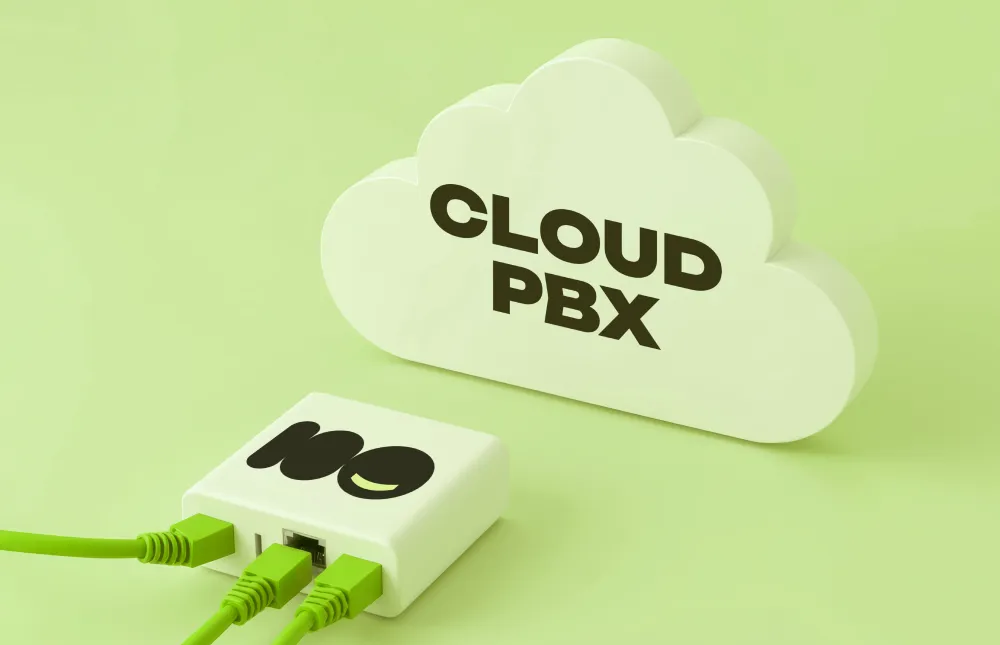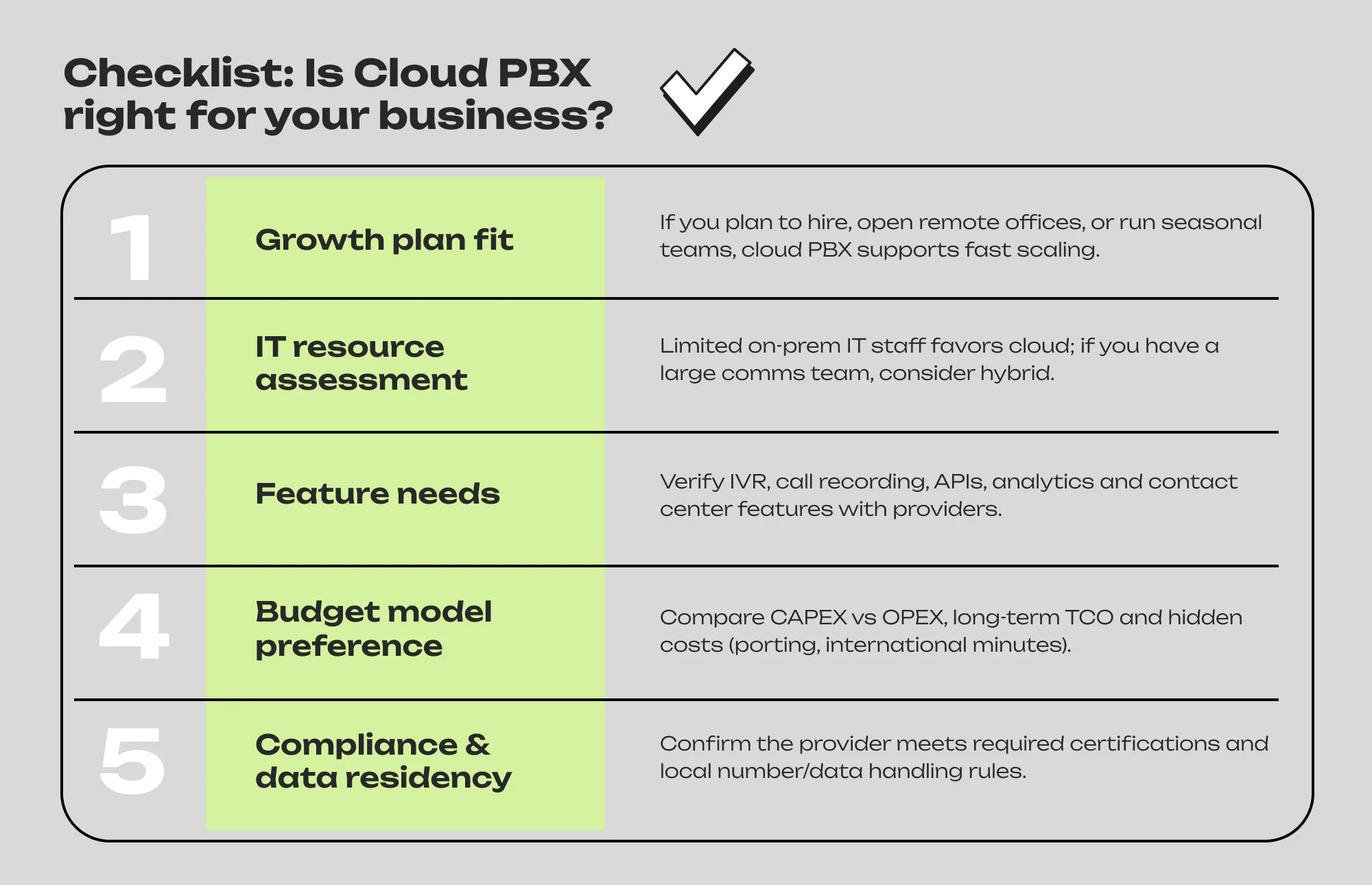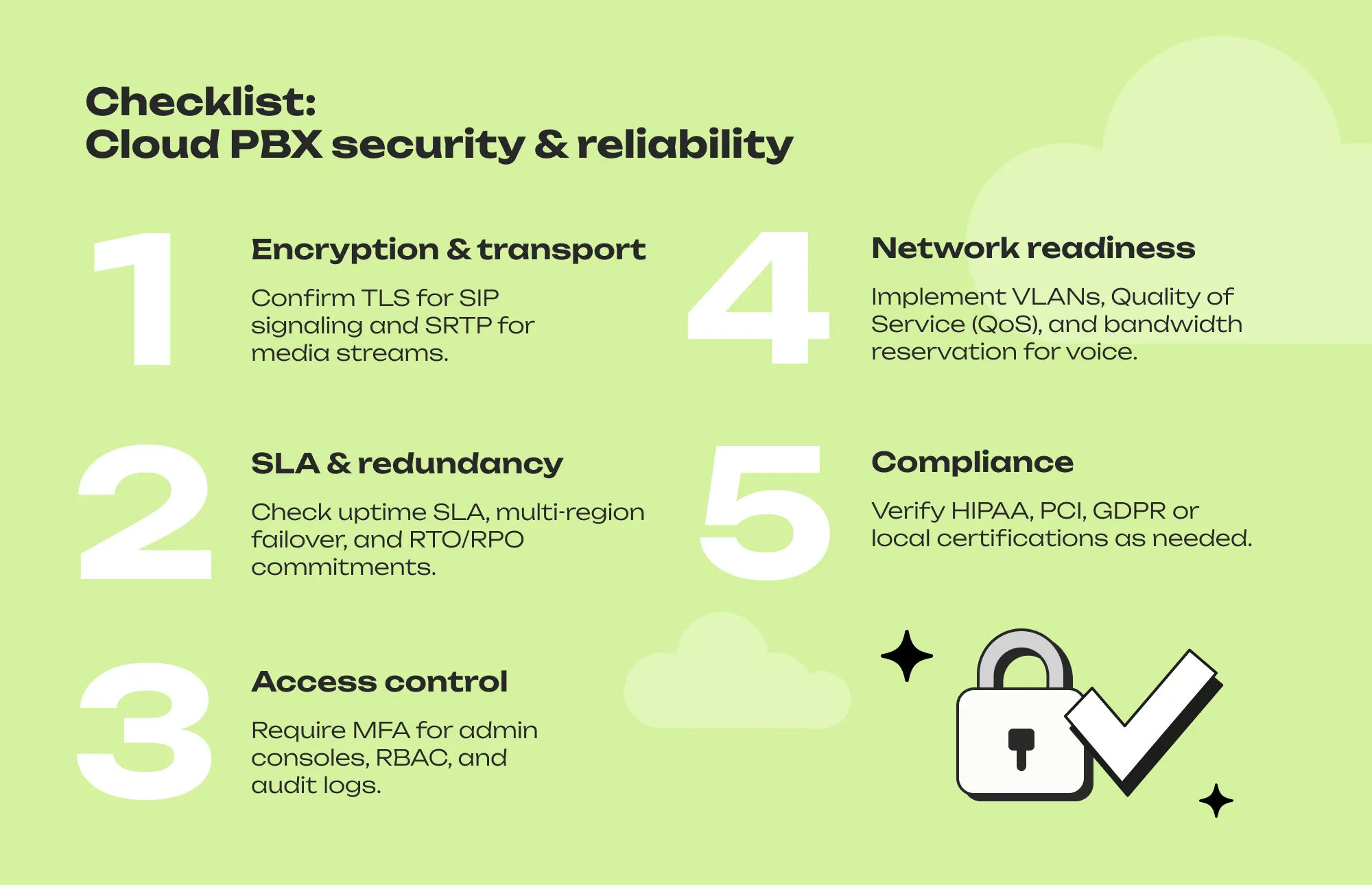Thank you!
The form has been successfully submitted
The form has been successfully submitted
Oops! Something went wrong, please try again

Cloud PBX, also known as cloud telephony, is often referred to in Eastern European markets as a Virtual PBX. These terms describe the same core concept — moving call management into the cloud — but at DID Global we emphasize Virtual PBX as the local equivalent of Cloud PBX. In practice, our solution delivers both: the global scalability of a cloud platform and the simplicity of a virtual PBX that businesses in our region are familiar with.
Cloud PBX (or cloud telephony) moves your business phone system from on-premise hardware into a provider’s cloud. Instead of local PBX boxes, servers, and SIP trunks you manage, the vendor hosts call control, voicemail, routing and advanced features — and you access everything via web portals and softphones. This shift changes telecom from a capital expense and a fixed facility into an on-demand service that scales with headcount and geography. Recent market research shows rapid adoption of cloud telephony as companies seek flexible, remote-friendly communications.
Legacy PBX platforms are appliance-centric: you buy boxes, licenses and trunks, then maintain firmware, power and on-site failover. Cloud PBX flips that model. The vendor handles availability, upgrades and carrier routing; you consume features (IVR, call queues, recordings, analytics) as services. That delivers faster feature rollouts, lower maintenance and less vendor lock-in for scaling businesses. If your company needs to add extensions overnight, swap numbers internationally, or route calls to remote agents, cloud solutions are inherently simpler to change than hardware stacks.
DID Global tip: Document your current call flows and system integrations before assessing providers — this ensures your price and migration comparisons are fair and truly like-for-like.
Cloud PBX combines cost efficiency with agility. You avoid large CAPEX outlays, reduce onsite rack footprint and shift recurring costs into predictable OPEX. Because most cloud platforms expose APIs and prebuilt connectors, telecom becomes part of the business app fabric: calls can trigger CRM records, tickets, or workflows. For distributed teams, cloud telephony makes remote agents first-class citizens — the “office” follows the user, not the desk. The result is better customer experience, faster provisioning, and the ability to pilot advanced features (AI IVR, speech analytics) without heavy integration projects.
Here are some key benefits:
Cloud pricing models let you pay for what you use: per-seat, per-minute, or hybrid. Removing hardware amortization and reducing local support often leads to measurable savings, especially for growing or seasonal teams.
Add or remove lines instantly, span DID Global numbers, and burst capacity for marketing campaigns without ordering trunk upgrades.
Agents use softphones, mobile apps, or web clients with full PSTN (Public Switched Telephone Network) features — enabling hybrid and remote work without compromise.
Cloud PBX vs. Virtual PBX: What’s the Difference?
In global telecom, the term Cloud PBX highlights scalability and integrations, while in markets like Ukraine or Eastern Europe the same model is widely known as Virtual PBX (Віртуальна АТС). At DID Global, we deliver a system that combines both approaches: cloud-native reliability with the flexible features of a virtual PBX.
Is Cloud PBX Right for Your Business?

Modern cloud PBX platforms are built to integrate. Out-of-the-box connectors for Salesforce, Zendesk, HubSpot or Microsoft Dynamics turn every call into a data point: screen-pop customer records, log calls automatically, and tie conversations to tickets and sales stages. For automation or bespoke workflows, platforms expose REST APIs and webhooks so developers can orchestrate calls, SMS, recordings and analytics inside internal dashboards. This tight coupling transforms telecom from an isolated utility into a source of operational insight and revenue intelligence.
Case in point: At DID Global, our team integrated cloud PBX with a mid-market CRM and automated call tagging for VIP customers. The result: 30% faster resolution times and measurable lift in repeat-business scores.
Security is often the main question when moving telecom to the cloud. Reputable vendors use TLS and SRTP to encrypt signaling and media, role-based access controls, hardened APIs, DDoS protections and SOC-certified data centers. Good providers publish SLAs and geo-redundant architectures to ensure continuity. That said, customers retain responsibility for secure endpoints, strong admin policies, and network Quality of Service (QoS) to preserve voice quality. Review provider security whitepapers and encryption standards before signing contracts.
Checklist — Cloud PBX security & reliability

Large enterprises and SMBs alike use cloud PBX to transform operations. A regional retailer can provision local phone numbers across markets overnight, route calls to bilingual agents, and surface call transcripts to marketing so campaigns adapt to customer sentiment.
A professional services firm uses cloud telephony to unify remote consultants: every advisor keeps a single business number, voicemails route to email with searchable transcripts, and billable client calls are auto-logged into the timekeeping system.
Contact centers run entirely in the cloud — agents work from home with browser softphones, supervisors have real-time dashboards, and workforce management integrates with scheduling tools to optimize staffing.
In manufacturing and logistics, cloud PBX integrates with IoT alarms so a machine fault triggers an automated voice alert to on-call engineers—reducing downtime. Even regulated sectors like healthcare use compliant cloud telephony to keep patient communications secure while maintaining audit trails.
These real-world patterns show cloud PBX does more than replace old phones: it re-architects how voice data powers business processes and customer experience, turning telephony from a cost center into a platform for operational agility and measurable ROI.

Start with an inventory (extensions, trunks, integrations), map critical call flows and agree SLAs with stakeholders. Run a pilot with a small team, validate call quality, port a few numbers, and test failover. Don’t forget training, endpoint management (headsets, softphones), and a rollback plan. Mature providers will assist with porting, number mapping and SIP trunking advice — but internal change management makes or breaks adoption.
DID Global tip: Run a 30-day parallel pilot (cloud + on-prem) for time-boxed validation — measure call quality, feature parity and CRM workflows before full cutover.
Cloud PBX is not just a technology swap; it’s an operational shift. When done thoughtfully, it reduces cost, speeds innovation and integrates voice into the data fabric of your business — making telecom a driver, not a blocker, of growth. Start right now with us.